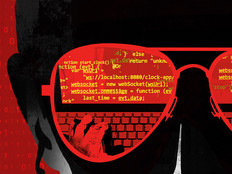Remote Hearings Usually Run Longer Due to Tech Difficulties
The NCSC report is based on a yearlong study that analyzed 1.25 million minutes of judicial data and feedback from judges and court leaders across eight Texas jurisdictions. It found that virtual hearings take 34 percent longer, on average, than in-person hearings, depending on case type. (Contract and divorce hearings had the largest time differences between the two formats, while modification/enforcement cases had the smallest difference.)
Technical difficulties were a major reason for the longer hearings.
About 1,500 Texas trial courts are using Zoom for remote hearings, according to the report. And as a recent Government Technology opinion article points out, “Not all would-be participants are proficient users, leading to frequent disruptions and delays. In addition, not everyone has sufficient Internet access, and there are inequities when it comes to the devices used to access hearings. For example, embedded translation services for non-native English speakers aren’t available to people joining via cellphone. Difficulty uploading documents and using visual aids can cause delays as well, forcing current judicial staff into tech support roles that stretch the bounds of their knowledge.”
LEARN ABOUT: How 3G sunsetting will impact public safety.
File Sharing Poses Challenges, but Litigants Increase Participation
A recent report by the Thomson Reuters Institute shows another primary technical challenge for virtual court hearings is related to collaboration and managing documents — sharing and accessing evidence and multimedia files, organizing evidence and communicating on annotations.
“While this is a serious problem in a civil case, it can be a detrimental, constitutional violation in a criminal case,” the report states. “In the future, this can be solved by having better familiarity with technology solutions for ease of use. … As in many corporate settings, courts too can take advantage of the advances in technology, while also keeping cybersecurity concerns in mind when it comes to storing sensitive evidence or documents. Courts and court staff will also want to consider having live and on-demand technology training sessions available to all participants so they may familiarize themselves with the technology before the hearing.”
In both studies, participants indicated that remote court hearings aren’t going away anytime soon.
In the Reuters report, an overwhelming majority of state and county/municipal courts represented in the research planned to continue with hybrid court hearings — a mixture of in-person and virtual formats. Only 13 percent said they planned to fully return to in-person operations. Civil, criminal and family cases topped the list of the types of hearings that would continue with a virtual component.
EXPLORE: How leaders are sharing data and breaking down data silos to improve services.
“Remote hearings are here to stay,” NCSC Vice President for Court Consulting Services David Slayton said in a news release accompanying his organization’s report.
While they do increase participation by litigants, it’s important for courts to identify and address the technology issues related to these remote proceedings, he said, highlighting one of the report’s recommendations to hire “technical bailiffs.” These or additional court staff would be responsible for setting up hearing links, scheduling parties, contacting them before the hearings and addressing any technical issues that arise during remote hearings. These tasks currently fall to many judges.
The report also calls on courts to not assume that all parties have access to the proper equipment necessary to participate in virtual court proceedings, and notes that courts should make such equipment available in a safe and easily accessible location.











